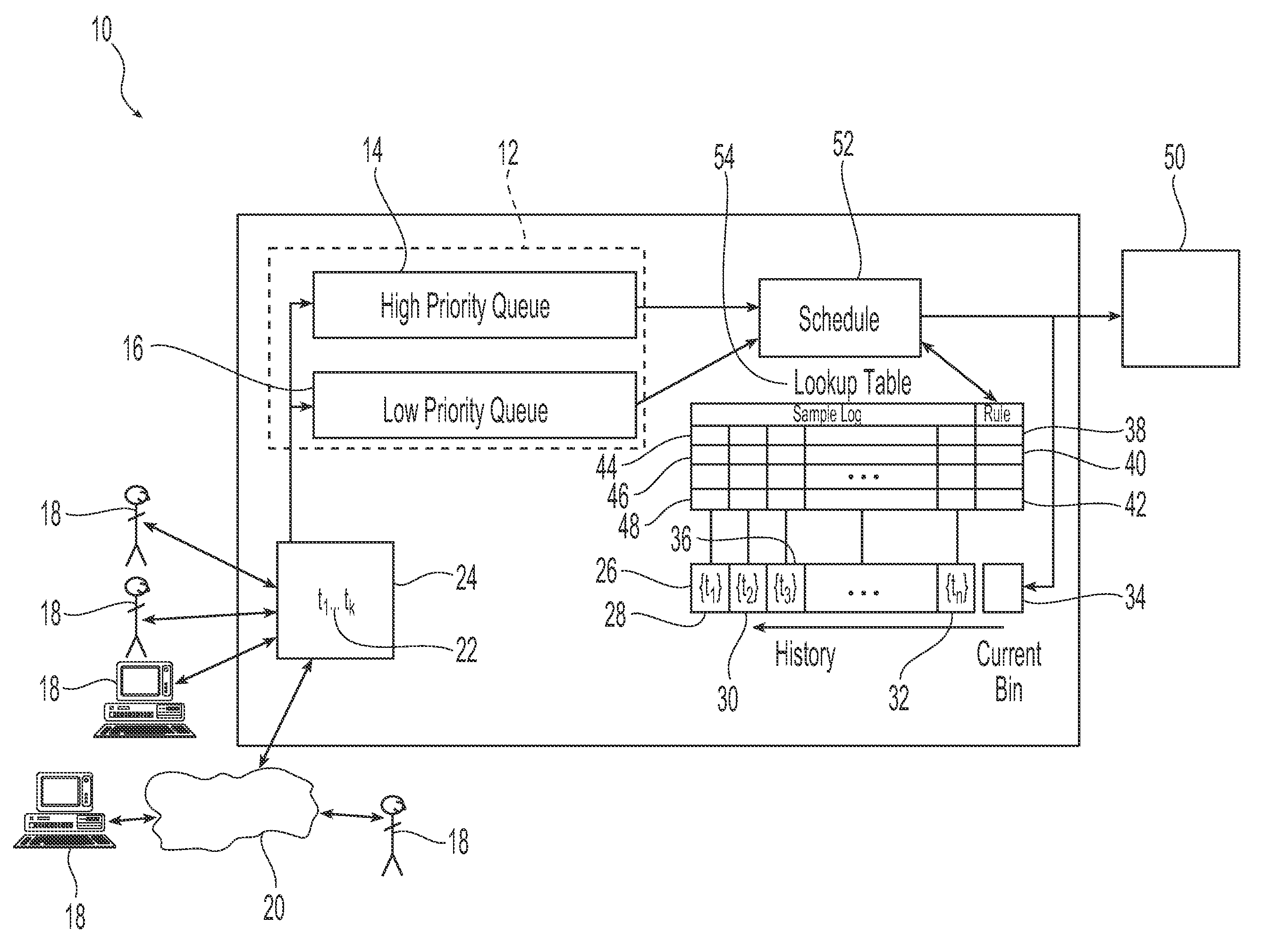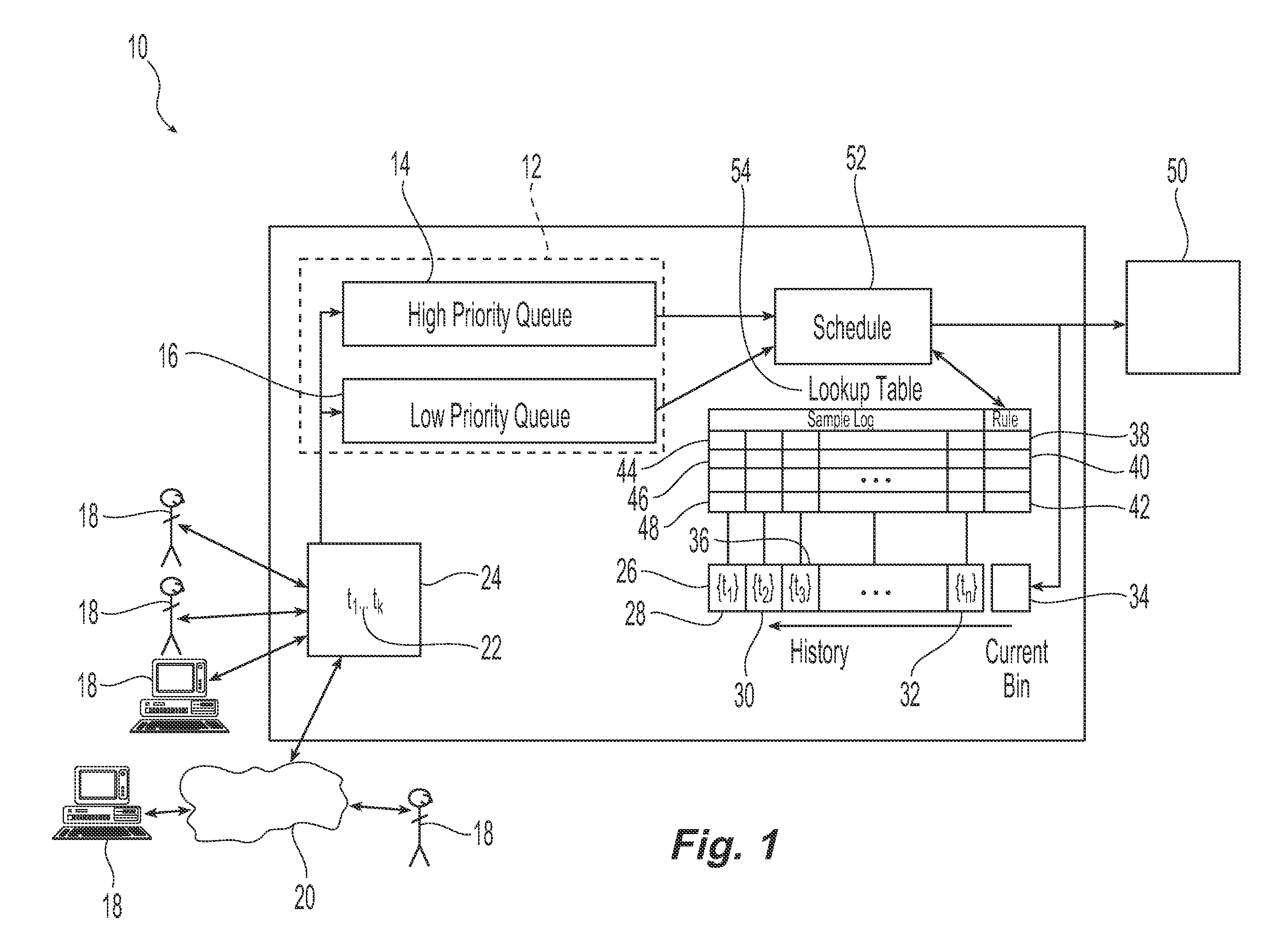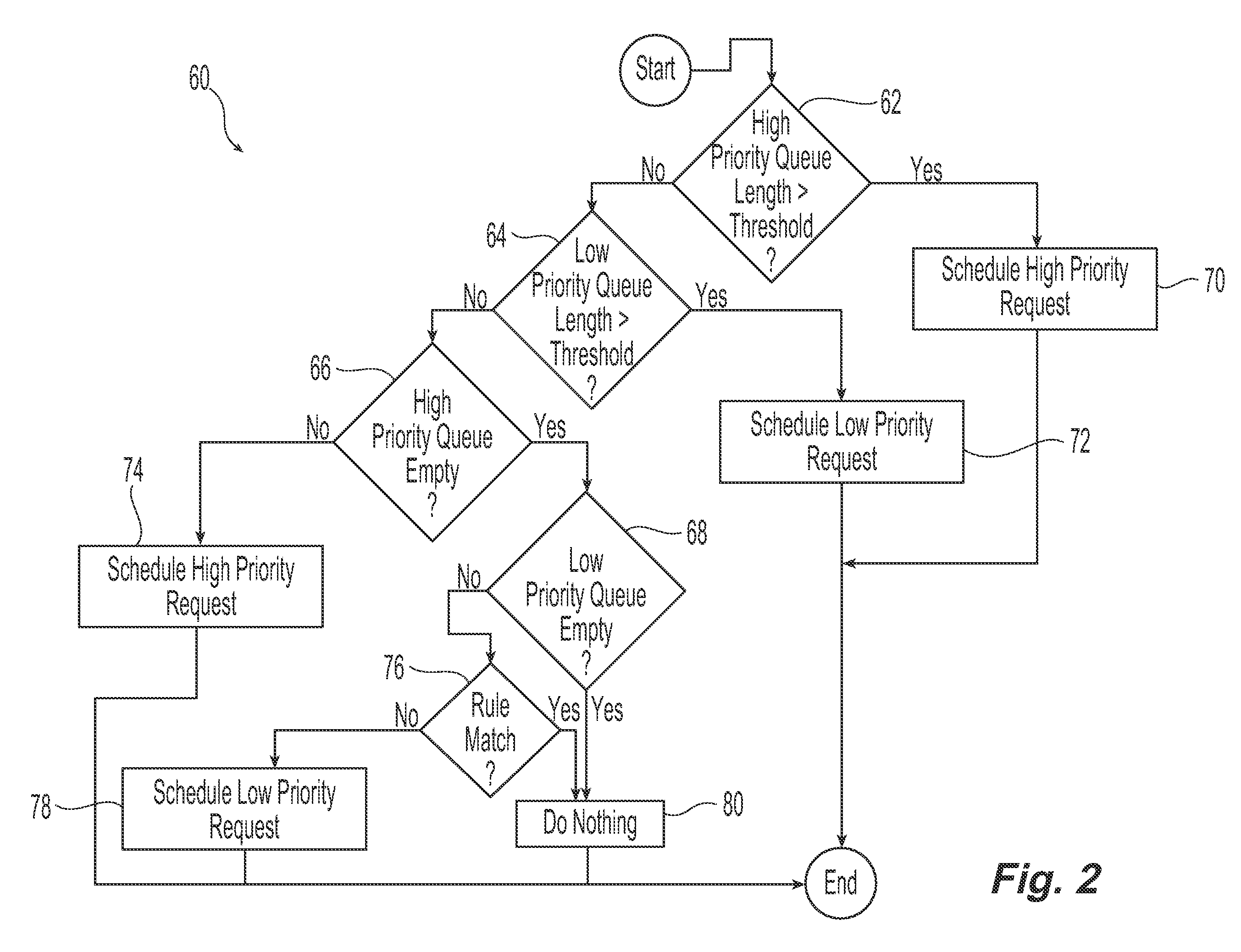Prediction Based Priority Scheduling
a priority scheduling and prediction technology, applied in the field of task scheduling in computing systems, can solve the problems of affecting future read requests, affecting the overall system performance, and requiring many cycles to complete, so as to reduce the delay of predicted interference, reduce the delay of queuing, and improve the overall system performance
- Summary
- Abstract
- Description
- Claims
- Application Information
AI Technical Summary
Benefits of technology
Problems solved by technology
Method used
Image
Examples
Embodiment Construction
[0016]Referring initially to FIG. 1, an exemplary embodiment of a system 10 for use in scheduling tasks in accordance with the present invention is illustrated. As illustrated, the system 10 receives a plurality of tasks or task requests 22 from a plurality of users 18. These submitted task requests 22 are to be scheduled for processing or execution by the system 10 in accordance with the history of task requests and one or more prescribed rules. Suitable users include, but are not limited to, persons such as system administrators and customers, computing systems servers and applications. In one embodiment, the users 18 are in communication with the system 10 through one or more networks 20, including local area networks and wide area networks. Suitable task requests 22 that are submitted by the users 18 include, but are not limited to, requests for computing system resources including requests for memory resources, processor resources and bandwidth. Requests for memory resources ca...
PUM
 Login to View More
Login to View More Abstract
Description
Claims
Application Information
 Login to View More
Login to View More - R&D
- Intellectual Property
- Life Sciences
- Materials
- Tech Scout
- Unparalleled Data Quality
- Higher Quality Content
- 60% Fewer Hallucinations
Browse by: Latest US Patents, China's latest patents, Technical Efficacy Thesaurus, Application Domain, Technology Topic, Popular Technical Reports.
© 2025 PatSnap. All rights reserved.Legal|Privacy policy|Modern Slavery Act Transparency Statement|Sitemap|About US| Contact US: help@patsnap.com



